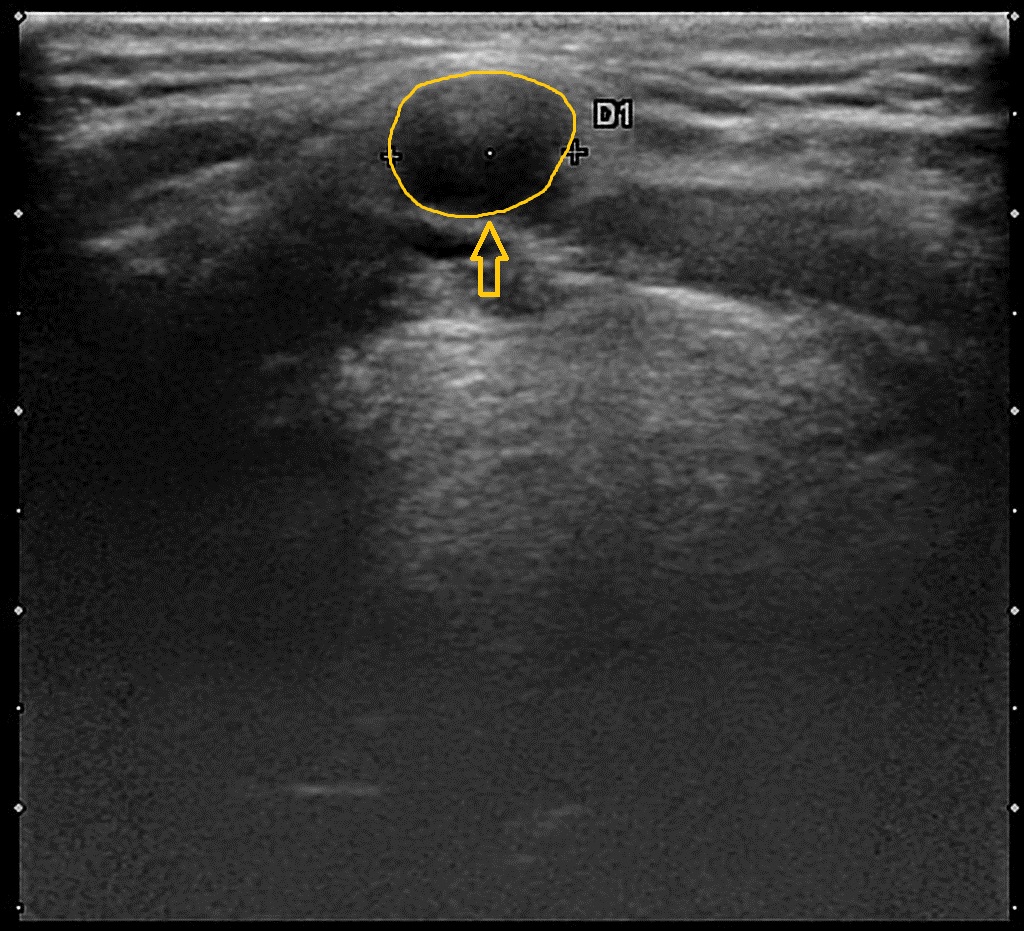Toxic multinodular goiter echocardiography or ultrasound
|
Toxic multinodular goiter Microchapters |
|
Differentiating Toxic multinodular goiter from other Diseases |
|---|
|
Diagnosis |
|
Treatment |
|
Case Studies |
|
Toxic multinodular goiter echocardiography or ultrasound On the Web |
|
American Roentgen Ray Society Images of Toxic multinodular goiter echocardiography or ultrasound |
|
FDA on Toxic multinodular goiter echocardiography or ultrasound |
|
CDC on Toxic multinodular goiter echocardiography or ultrasound |
|
Toxic multinodular goiter echocardiography or ultrasound in the news |
|
Blogs on Toxic multinodular goiter echocardiography or ultrasound |
|
Risk calculators and risk factors for Toxic multinodular goiter echocardiography or ultrasound |
Editor-In-Chief: C. Michael Gibson, M.S., M.D. [1]; Associate Editor(s)-in-Chief: Mazia Fatima, MBBS [2]
Overview
Thyroid ultrasonography is the imaging method of choice in the diagnosis of multinodular goiter. Findings on an ultrasonography suggestive of multinodular goiter include more than one nodule including the non-palpable nodules cysts with varying echogenicity. Thyroid ultrasonography helps in assessment of size and number of nodules. Assessment of vascular characteristics of a thyroid nodule with Doppler helps in screening thyroid nodules for malignancy.
Ultrasound
- Thyroid ultrasonography is the imaging method of choice in the diagnosis of multinodular goiter.
- Findings on an ultrasonography suggestive of multinodular goiter include more than one nodule including the non-palpable nodules cysts with varying echogenicity.[1]
- Thyroid ultrasonography helps in assessment of size and number of nodules. Surgeon-performed ultrasonographic examinations can be used to make necessary changes in surgical treatment and to avoid unnecessary surgery.[2]
- Assessment of vascular characteristics of a thyroid nodule with Doppler helps in screening thyroid nodules for malignancy.
- Findings on ultrasonography suggestive of multinodular goiter benign nodules include:[3]
- Iso-hyperechoic nodules
- Surrounding hypoechoic halo
- Spongelike/honeycomb pattern
- Peripheral (eggshell) or coarse calcifications.
- Doppler:
- Peripheral vessels are usually noted
- The risk of malignancy is lower in nodules with a predominantly perinodular pattern
- Findings on ultrasonography suggestive of multinodular goiter malignant nodules include:[3]
- Hypoechoic solid
- Intranodular blood flow.
- Presence of microcalcifications
- Size greater than 10mm
- Nodules with an exclusively central vascular pattern on doppler
- It is important to screen for presence of malignant features (if any) and futher investigate with fine needle aspiration biopsy(FNAB) from the suspicious nodule.
- Thyroid ultrasonography can be used to guide FNAB. ultrasonography-guided FNAB may be preferable to palpation-guided FNAB.
- The possibility of measuring thyroid volume is another highly useful feature of ultrasonographic studies particularly after therapy with L-T4 or radioiodine ablation

References
- ↑ Haugen BR (2017). "2015 American Thyroid Association Management Guidelines for Adult Patients with Thyroid Nodules and Differentiated Thyroid Cancer: What is new and what has changed?". Cancer. 123 (3): 372–381. doi:10.1002/cncr.30360. PMID 27741354.
- ↑ Mazzaglia PJ (2010). "Surgeon-performed ultrasound in patients referred for thyroid disease improves patient care by minimizing performance of unnecessary procedures and optimizing surgical treatment". World J Surg. 34 (6): 1164–70. doi:10.1007/s00268-010-0402-y. PMID 20135315.
- ↑ 3.0 3.1 Bahn RS, Castro MR (2011). "Approach to the patient with nontoxic multinodular goiter". J. Clin. Endocrinol. Metab. 96 (5): 1202–12. doi:10.1210/jc.2010-2583. PMID 21543434.